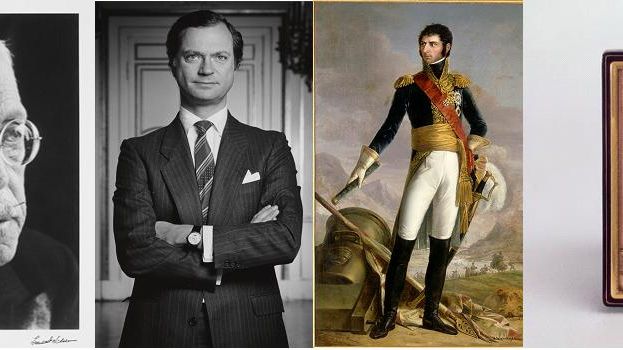
Press release -
Bernadottes on show at Nationalmuseum
Coming this summer: The Bernadottes in Black and White
As part of Sweden’s Bernadotte Year, Nationalmuseum is presenting an
exhibition of black-and-white portraits of the House of Bernadotte, from
King Karl XIV Johan to the present royal family. The emphasis is on
20th-century photographs, but some 19th-century works will also be on
display. Together, they show how the art of portrait photography has
evolved in Sweden over the past 150 years. Alongside the photographs,
Nationalmuseum will present a selection of graphic art and drawings,
mainly depicting early generations of the House of Bernadotte.
The featured photographers from the mid-19th century include Mathias Hansen and Bertha Valerius, who were practising at the time when portrait photography was becoming established as an art form and means of expression. From the modern age, the featured photographers include Bruno Ehrs, Hans Gedda, Hans Hammarskiöld, Mikael Jansson, Denise Grünstein and Lennart Nilsson. The Bernadottes in Black and White offers an opportunity to reflect on the significance of photography and graphic art to the role of monarch, and on how art depicts the pillars of society. To illustrate how widely distributed royal portraits are, examples of reproductions on china and textiles will be exhibited. The exhibition runs from 16 June 2010 to 23 January 2011.
Coming this autumn: Staging Power – Napoleon, Karl Johan, Alexander
This
autumn, Nationalmuseum joins forces with the State Hermitage, St.
Petersburg, to present a magnificent exhibition on the art of governing
through art. The exhibition will feature a wealth of historical
artifacts and fine artisan wares presented in context, telling a story
of honour and power. On show will be a collection of some 420 items:
portraits, costumes, jewellery, china and uniforms.
Napoleon, Karl XIV Johan and Alexander I represent a new world of imagery that developed as a result of Europe’s political upheavals in the early 19th century. The notion of art in the service of power was consistently applied – a teacup, a desk clock and a full-length portrait could be equally dignified. The content of the artifacts reinforced the ruler’s legitimacy, succession and claim to power.
The role of art is
shaped by war and other events, and the exhibition will consider the
relationship between war, art and politics. Topics such as Visual manifestations of power, International politics and dynastic family ties, and Art collecting will be covered in depth. The exhibition runs from 30 September 2010 to 23 January 2011.
Further information
Hanna Tottmar, press officer: htr@nationalmuseum.se, +46 8 5195 4390
Anna Jansson, press officer: ajn@nationalmuseum.se, +46 8 5195 4391
Captions
Lennart Nilsson, Gustav V, King of Sweden, 1950
Hans Hammarskiöld, HM The King, 1996
Joseph Nicolas Jouy after François JosephKinson, Jean Baptiste Bernadotte, Marshal of France, King of Sweden and Norway, 1818 © RMN (Château de Versailles)/Gérard Blot
Martin-Guillaume Biennais, Laurel leaf from the golden laurel wreath used at the coronation 1804, mounted in a box © Musée et Domaine nationaux du Château de Fontainebleau
Categories

